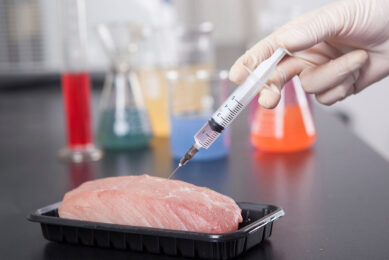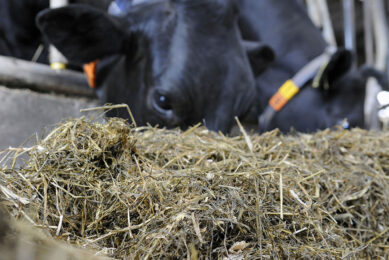Research: Methane production in dairy cows
Dutch researchers investigated the effects of a combination of feed additives on methane production, diet digestibility, and animal performance in lactating dairy cows.
Two experiments were conducted to assess the effects of a mixture of dietary additives on enteric methane production, rumen fermentation, diet digestibility, energy balance, and animal performance in lactating dairy cows.
Identical diets were fed in both experiments. The mixture of feed additives investigated contained lauric acid, myristic acid, linseed oil, and calcium fumarate.
These additives were included at 0.4, 1.2, 1.5, and 0.7% of dietary dry matter, respectively (treatment ADD).
Experimental fat sources were exchanged for a rumen inert source of fat in the control diet (treatment CON) to maintain isolipidic rations.
Cows (experiment 1, n = 20; experiment 2, n = 12) were fed restricted amounts of feed to avoid confounding effects of dry matter intake on methane production.
In experiment 1, methane production and energy balance were studied using open-circuit indirect calorimetry.
In experiment 2, 10 rumen-fistulated animals were used to measure rumen fermentation characteristics. In both experiments animal performance was monitored.
Results
The inclusion of dietary additives decreased methane emissions (g/d) by 10%.
Milk yield and milk fat content tended to be lower for ADD in experiment 1.
In experiment 2, milk production was not affected by ADD, but milk fat content was lower.
Fat- and protein-corrected milk was lower for ADD in both experiments. Milk urea nitrogen content was lowered by ADD in experiment 1 and tended to be lower in experiment 2.
Apparent total tract digestibility of fat, but not that of starch or neutral detergent fibre, was higher for ADD.
Energy retention did not differ between treatments.
The decrease in methane production (g/d) was not evident when methane emission was expressed per kilogram of milk produced.
Feeding ADD resulted in increases of C12:0 and C14:0 and the intermediates of linseed oil biohydrogenation in milk in both experiments.
In experiment 2, ADD-fed cows tended to have a decreased number of protozoa in rumen fluid when compared with that in control cows. Total volatile fatty acid concentrations were lower for ADD, whereas molar proportions of propionate increased at the expense of acetate and butyrate.
To view references and further reading you must purchase this article.
Join 26,000+ subscribers
Subscribe to our newsletter to stay updated about all the need-to-know content in the feed sector, three times a week. Beheer
Beheer









 WP Admin
WP Admin  Bewerk bericht
Bewerk bericht